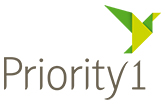
When Jack and Sarah met through mutual friends, they hit it off immediately. Both had previously been married and, besides having a child each, found they had quite a lot in common.
Dinner dates quickly morphed into family-style outings with their children, to the zoo or adventure theme parks, and soon the couple was talking about taking their relationship to the next level.
According to the Australian Bureau of Statistics, in 2018, over 118,000 marriages took place in Australia. Of those, 15.7 % were second marriages. Many of this number were considered ‘blended’, meaning that one or both parents had children from previous relationships.
Marriage breakdown can result in significant financial commitments and family court outcomes. People entering new relationships bring these commitments with them.
The Australian government’s Family Relationships website suggests that negotiation and communication are key to resolving these issues before they get out of hand.
Couples, like Jack and Sarah, planning a future together should discuss their financial and legal positions with honesty and transparency. This is critical to building trust and keeping finances under control.
Topics to cover include:
Assets: List what you own and what you have divided with your former spouse. Sometimes, for example where there was a family business, the asset may be maintained jointly.
Debts: Full disclosure is vital. List credit cards and balances, personal loans, mortgages etc. how much you’re paying and when, and how, you expect to pay them off. If both of you have a number of debts each, you may consider consolidating some of them to make it easier to stay on track.
Your accountant or financial adviser can help with this.
Children: Provision must be made to support children from previous marriages as well as new family members.
Children sharing time between two households must be treated equally. Even if they only live with you part-time, their education and recreational activities must be included in household budgeting.
Savings: It may not be necessary to open joint accounts and investments immediately. But once you consider buying a home, or have other long-term goals, setting up a joint account to manage mortgage payments, rates and insurances, etc. may be helpful.
Additionally, if you’re saving for something you both want, a holiday for example, discuss opening a dedicated joint account.
Life insurance: Consider whether your insurances need to be updated, along with your nominated beneficiaries. Changes to your lifestyle and family structure can impact your insurance needs so it’s important to review your policies.
Superannuation: This does not automatically form part of your estate. In the event of your death, the Australian Tax Office focusses on current spouses and dependents. Setting up a Binding Nomination of Beneficiary will ensure your super benefits are directed to your former spouse, current spouse or children as you choose.
Wills: Any time your family structure changes, you should update your Will. This is true for all births and deaths as well as marriages and divorces. Estate planning can be complex and difficult, so it’s best to seek professional advice if you’re uncertain.
Managing finances for a blended family can be emotional and tangled. Decisions around the previous relationship – some of which may have been court imposed – must be included which adds a layer of complexity.
We can help you look at the big picture and understand how you can structure your affairs to ensure nothing and nobody is forgotten.
Additionally, a realistic household budget will identify all income and expenses so you can get on top of your affairs, stay on track, and look forward to the future.
